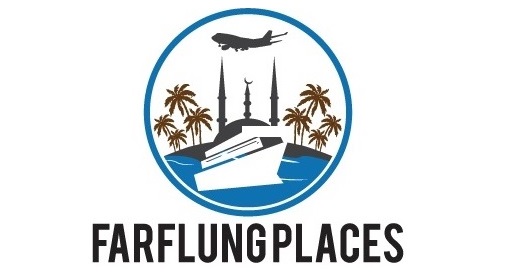Samoa now featured high on the list of places I wanted to travel to.
 |
| The fireplace. Vital for Samoa's cold 28C (82F) winters |
The house is preserved through a joint effort of the Samoan government and a US charitable trust and contains many of the writer’s possessions, furniture, as well as his published works.
Most people will have come into contact with Robert Louis Stevenson’s work either through reading his most popular books; whether that is Dr Jekyll and Mr Hyde, Kidnapped or Treasure Island, or through TV and film adaption’s of them. Copies of the books, translated into most of the languages of the world, are displayed on the bookshelves.
 |
| Over the gardens and to the ocean. The view from the authors chair at Vailima |
Although tempted to spend the rest of the day there, I wanted to visit Stevenson’s grave, on the top of Mount Vaea behind the house.
The walk up is not for the faint-hearted. There is a fast way, an almost vertical track, of 500 metres, or a longer 2 km hike. It was the wet season and the fast route was almost impassable due to the mud and lack of footholds, even the longer slow track was challenging at times. Streams washed over the path in places and the mud caused me to lose my footing and slip several times.
 |
| A map showing the routes up to the grave |
The white tomb sits alone on a small patch of grass, with glimpses of the Pacific Ocean through the trees. A requiem, written by Stevenson fourteen years before his death, is inscribed in Samoan and English on one side.
Under the wide and starry sky
Dig the grave and let me lie.
Glad did I live and gladly die,
And I laid me down with a will.
This be the verse you grave for me:
Here he lies where he longed to be
Home is the sailor, home from sea,
And the hunter home from the hill.
 |
| The grave of Robert Louis Stevenson |
On the way back down I stopped at Stevenson’s swimming pool. Freshwater from Mount Vaea tumbles over a small waterfall into an idyllic basin shaded by trees.
Even when the writer was in poor health he would slowly make his way down to the pool and swim in it for hours. I could clearly see the attraction of jumping into its cool waters, particularly after the climb.
 |
| The shady, and enticing, Stevenson Pool |
He chose to live in Vailima, the magnificent house and grounds were a fitting place, perfect for writing. The sad part was that it was only to be for four short years before his untimely death at the age of 44.
 |
| Robert Louis Stevenson (centre-seated) and his family. (The original is the London National Portrait Gallery) |
Far Flung Tips
* Robert Louis Stevenson’s House and Museum are open Monday to Friday from 9 AM to 4:30 PM, and Saturdays from 9 AM to 12:00 AM.
* A tour is required if you wish to go inside the house. Adults cost $ST 20, Students $ST 10 and Children $S5.
* A Taxi from the centre of Apia is approximately $ST20 each way. As there are few taxis available for a return journey get the drivers phone number and call him when you are ready to return. He will be very happy to do this and get another good fare!
* The gardens, swimming pool and the walk up to the grave are all free. The walk to the grave can be slippery, even in dry weather, so wear suitable shoes. Avoid after heavy rain unless you want to get very muddy and enjoy slipping and sliding in mud.
 |




0 comments